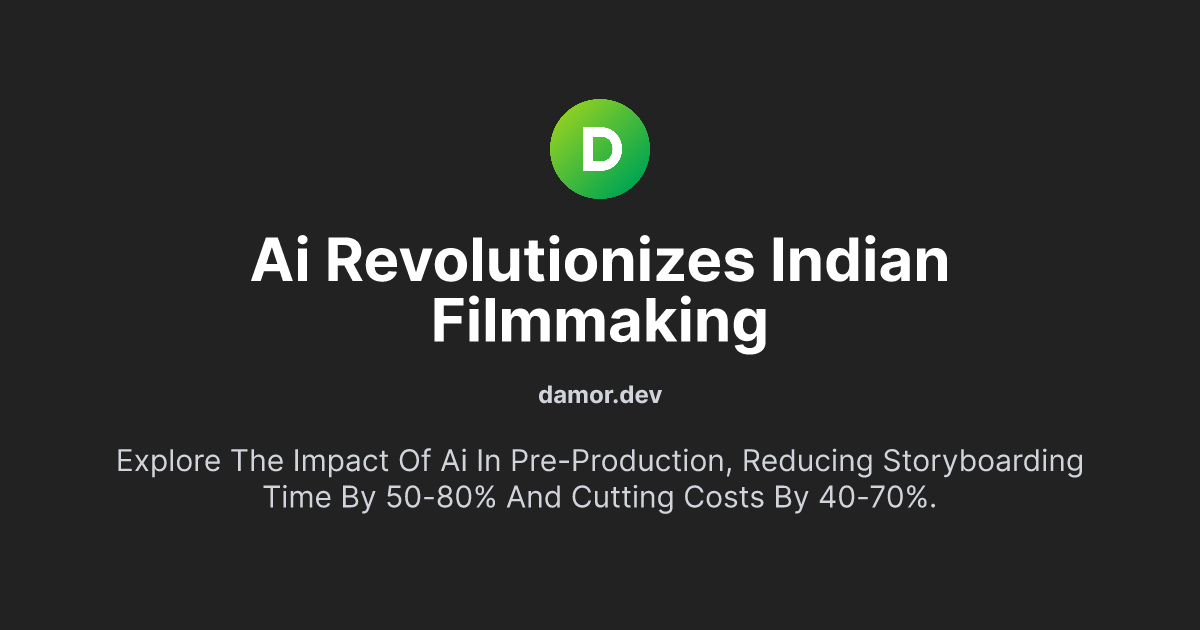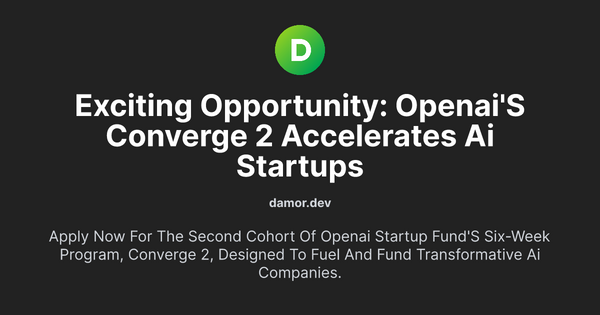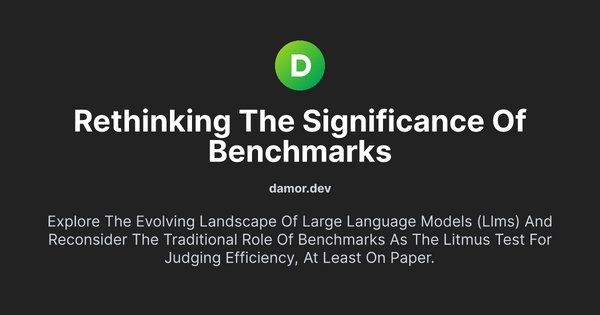AI Revolutionizes Indian Filmmaking

Making Movies with AI: Simplifying Storyboarding and More
Have you ever wondered how artificial intelligence (AI) is changing the game in the Indian film industry? Well, buckle up, because we're diving into the exciting world where AI meets movie production.
Revolutionizing Pre-Production: Imagine cutting down the time it takes to plan a movie by half or even more! That's what AI is bringing to the table in the pre-production phase, especially in the critical process of storyboarding. By implementing AI, the time and cost of storyboarding can be reduced significantly, offering a game-changer for both creativity and efficiency in the film industry.
AI Tools in Action: Several AI tools like Stable Diffusion, Runway, and Pika are making waves in the industry. Although they have some limitations, production houses are already experimenting with them, focusing not just on creativity but also on operational efficiency. Post-production has seen significant AI advancements, with tools analyzing clips, splicing, de-aging, and handling visual effects. Now, AI is stepping into pre-production, specifically in the planning phase, with a major impact on storyboarding.
Democratizing Filmmaking with AI: Enter d.cult studio, a startup in Trivandrum, on a mission to 'democratize the art of filmmaking' through AI. Working with major studios in the Malayalam movie industry, including Festival Studios and Prithviraj Productions, d.cult is transforming traditional storyboarding into cinematic-style experiences. This change isn't just about aesthetics; it's about saving time and costs during actual shoots. With accurate storyboarding, there's an impressive 50-80% reduction in the time spent and a substantial 40-70% cut in overall costs.
AI's Impact on Production Costs: To put it in perspective, in a 50-day shoot with a daily cost of 5 lakhs, AI storyboarding can save a whopping 25 lakhs from the production budget. This isn't just a time-saver; it's a game-changer for storyboard creators. Thanks to AI tools, creators can now produce up to 100 images in a day, a significant leap from the previous average of two images.
Behind the Scenes: d.cult studio employs a mix of proprietary and open-source models, along with natural language processing (NLP) algorithms. They use cutting-edge models like BUD LLMs – GenZ for idea to story/screenplay generation and OpenAI’s Jukebox for auto music suggestion and background music integration. Deep learning and computer vision models handle AI video analysis and storyboard visualization.
More Than Storyboarding: But storyboarding is just the tip of the iceberg. d.cult studio offers a comprehensive AI solution, including script-to-storyboard conversion, collaborative whiteboards for idea discussions, video analysis for story ideas, pre-visualization, photo generation, and more.
Addressing Copyright Concerns: With copyright issues looming over AI-generated content, d.cult studio ensures strict measures. They use materials created by their team, those in the public domain, or available under creative commons licenses for AI inputs.
Not Everyone's Jumping In: While some production houses are embracing AI for efficiency, iconic studios like Studio Ghibli remain steadfast in their traditional hand-drawn animation methods. Hayao Miyazaki, co-founder and director of Studio Ghibli, has expressed strong disapproval of AI art, calling it 'utterly disgusting.' He believes it lacks the genuine feel of human-created artwork and refuses to incorporate it into his work.
The Future of AI in Filmmaking: As AI tools continue to evolve, some are experimenting with a mix of models to create anime and movies. While there's ongoing debate about complete AI adoption, the consensus is that AI's real use case lies in enhancing operational efficiency and reducing costs. The future of filmmaking is undoubtedly intertwined with the power of artificial intelligence.


![[Solved] ZlibError:zlib:
unexpected end of file - payload](/content/images/size/w600/2024/02/Screenshot-2024-02-18-143905.png)


